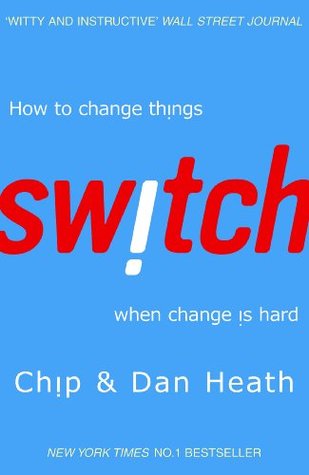More on this book
Community
Kindle Notes & Highlights
What looks like a people problem is often a situation problem.
Ultimately, all change efforts boil down to the same mission: Can you get people to start behaving in a new way?
To change someone’s behavior, you’ve got to change that person’s situation.
For individuals’ behavior to change, you’ve got to influence not only their environment but their hearts and minds.
Self-control is an exhaustible resource.
What looks like laziness is often exhaustion.
If you want people to change, you must provide crystal-clear direction.
What looks like resistance is often a lack of clarity.
Direct the Rider. What looks like resistance is often a lack of clarity. So provide crystal-clear direction.
Motivate the Elephant. What looks like laziness is often exhaustion.
Shape the Path. What looks like a people problem is often a situation problem.
“Knowledge does not change behavior,”
Big problems are rarely solved with commensurately big solutions. Instead, they are most often solved by a sequence of small solutions, sometimes over weeks, sometimes over decades.
More options, even good ones, can freeze us and make us retreat to the default plan,
And that’s why decision paralysis can be deadly for change—because the most familiar path is always the status quo.
Big-picture, hands-off leadership isn’t likely to work in a change situation, because the hardest part of change—the paralyzing part—is precisely in the details.
Ambiguity is the enemy. Any successful change requires a translation of ambiguous goals into concrete behaviors. In short, to make a switch, you need to script the critical moves.
When you want someone to behave in a new way, explain the “new way” clearly. Don’t assume the new moves are obvious.
(A “long-term mindset” isn’t a behavior.)
When you feed subjective estimates into an expected-value calculation, a precise number pops out, giving the illusion of scientific certainty.
When you’re at the beginning, don’t obsess about the middle, because the middle is going to look different once you get there. Just look for a strong beginning and a strong ending and get moving.
Don’t obsess about the failures. Instead, investigate and clone the successes.
the core of the matter is always about changing the behavior of people, and behavior change happens in highly successful situations mostly by speaking to people’s feelings.
Trying to fight inertia and indifference with analytical arguments is like tossing a fire extinguisher to someone who’s drowning. The solution doesn’t match the problem.
We can change behavior in a short television ad. We don’t do it with information. We do it with identity:
when people fail to change, it’s not usually because of an understanding problem.
If you need quick and specific action, then negative emotions might help. But most of the time when change is needed, it’s not a stone-in-the-shoe situation.
To solve bigger, more ambiguous problems, we need to encourage open minds, creativity, and hope.
I have learned that the math does need to work, but sometimes motivation is more important than math.
When you engineer early successes, what you’re really doing is engineering hope.
When you set small, visible goals, and people achieve them, they start to get it into their heads that they can succeed. They break the habit of losing and begin to get into the habit of winning.
“When you improve a little each day, eventually big things occur …. Don’t look for the quick, big improvement. Seek the small improvement one day at a time. That’s the only way it happens—and when it happens, it lasts.
“A small win reduces importance (‘this is no big deal’), reduces demands (‘that’s all that needs to be done’), and raises perceived skill levels (‘I can do at least that
Because identities are central to the way people make decisions, any change effort that violates someone’s identity is likely doomed to failure.
When you think about the people whose behavior needs to change, ask yourself whether they would agree with this statement: “I aspire to be the kind of person who would make this change.
people will persevere only if they perceive falling down as learning rather than as failing
If you’re hungry and need a can of food, you’re three times better-off relying on a jerk with a map than on a budding young saint without one.)
You know you’ve got a smart solution when everyone hates it and it still works—and in fact works so well that people’s hate turns to enthusiasm.
Checklists provide insurance against overconfidence. And overconfidence is worth insuring against because we all have a knack for it.
They think if something is simple enough to be put in a checklist, a monkey can do it. Well, if that’s true, grab a pilot’s checklist and try your luck with a 747.
For a time, at least, you’ve got to permit an “us versus them” struggle to take place.
The idea is that if you understand your colleagues’ “types,” you’ll all get along better. And some people may find the knowledge of types useful. But notice that this sounds like Fundamental Attribution Error thinking.
A trainer in California taught six elephants to stand in a line and urinate on command, and they hadn’t even completed a Myers-Briggs.
Change isn’t an event; it’s a process.


